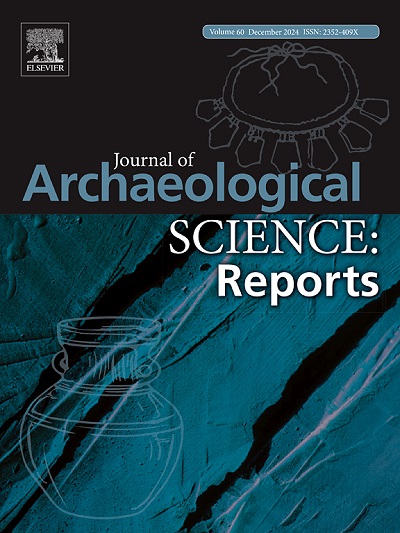基于亚美尼亚高地植物岩的高分辨率古环境记录:Aghitu-3洞穴旧石器时代晚期
IF 1.5
2区 历史学
0 ARCHAEOLOGY
引用次数: 0
摘要
南高加索和亚美尼亚高地的丰富的晚更新世考古记录为考古学家提供了一个独特的机会来研究居住在该地区的各种人类群体的行为模式。由于围绕生存、迁徙和社会网络的选择发生在区域和当地的古环境条件下,了解这些对任何考古解释都至关重要。在前人研究的基础上,将现代植被类型与不同的植物岩组合联系起来,本研究使用植物岩作为代理来研究亚美尼亚高地东北部旧石器时代晚期的古环境。基于相对丰度和线性判别分析,利用Aghitu-3洞穴考古遗址(40-24 ka)的植物岩组合,验证了现代植物岩数据可以作为古环境重建的代表的假设。这个分层特别好的旧石器时代晚期遗址位于亚美尼亚南部。这项研究的结果显示了该遗址16000年序列中植被的明显差异。这些变化可能代表了该地区亚高山林地和草本为主的草地生物群落在草原为主环境下的扩张和退缩。虽然区域气候数据显示,在MIS 3和MIS 2期间,气候条件发生了快速而强烈的变化,但Aghitu-3的植物岩组合表明,当地的环境响应是微弱的。此外,在考古地平线III (~ 29 - 24000 cal BP)沉积的强化人类活动的植物岩表明,居民使用莎草作为原料,可能用于床上用品或篮子。该研究显示了植物岩分析在南高加索和亚美尼亚高地古环境重建及以后的潜力。本文章由计算机程序翻译,如有差异,请以英文原文为准。
A high-resolution paleoenvironmental record based on phytoliths from the Armenian Highlands: The Upper Paleolithic of Aghitu-3 Cave
The rich archaeological record of the Late Pleistocene in the southern Caucasus and Armenian Highlands offers archaeologists a unique opportunity to study the behavioral patterns of the varied groups of hominins who occupied the region. As choices around subsistence, migration, and social networks, take place within regional and local paleoenvironmental conditions, understanding these is critical to any archaeological interpretation. Building on previous research linking modern vegetation types with distinct phytolith assemblages, this study uses phytoliths as a proxy to examine the Upper Paleolithic paleoenvironment in the northeastern Armenian Highlands. Based on relative abundance and linear discriminant analysis, phytolith assemblages from the archaeological site of Aghitu-3 Cave (40–24 ka) are used to test the hypothesis that modern phytolith data can function as a proxy for paleoenvironmental reconstruction. This particularly well-stratified Upper Paleolithic site is located in southern Armenia. The results of this study show clear differences in vegetation throughout the site’s 16,000-year sequence. These shifts likely represent the expansion and retreat of subalpine woodland and herb-dominated grassland biomes against the dominant steppe environment in the region. Although regional climate data show rapid and intense shifts in climatic conditions through MIS 3 and 2, the phytolith assemblage at Aghitu-3 suggests that local environmental response was muted. Additionally, phytoliths from intensified human occupation deposited in Archaeological Horizon III (∼29–24,000 cal BP) suggest that the inhabitants utilized sedge as raw material, likely for bedding or basketry. This study shows the potential of phytolith analysis for paleoenvironmental reconstruction and beyond, in the southern Caucasus and Armenian Highlands.
求助全文
通过发布文献求助,成功后即可免费获取论文全文。
去求助
来源期刊

Journal of Archaeological Science-Reports
ARCHAEOLOGY-
CiteScore
3.10
自引率
12.50%
发文量
405
期刊介绍:
Journal of Archaeological Science: Reports is aimed at archaeologists and scientists engaged with the application of scientific techniques and methodologies to all areas of archaeology. The journal focuses on the results of the application of scientific methods to archaeological problems and debates. It will provide a forum for reviews and scientific debate of issues in scientific archaeology and their impact in the wider subject. Journal of Archaeological Science: Reports will publish papers of excellent archaeological science, with regional or wider interest. This will include case studies, reviews and short papers where an established scientific technique sheds light on archaeological questions and debates.
 求助内容:
求助内容: 应助结果提醒方式:
应助结果提醒方式:


